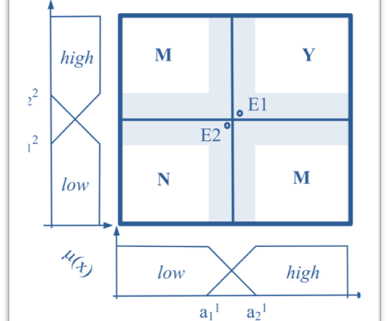Classification by ordinal sums of conjunctive and disjunctive functions for explainable AI and interpretable machine learning solutions
Classification by ordinal sums of conjunctive and disjunctive functions for explainable AI and interpretable machine learning solutions just been published in Knowledge Based Systems, doi:10.1016/j.knosys.2021.106916
We propose a novel classification according to aggregation functions of mixed behavior by variability in ordinal sums of conjunctive and disjunctive functions. Consequently, domain experts are empowered to assign only the most important observations regarding the considered attributes. This has the advantage that the variability of the functions provides opportunities for machine learning to learn the best possible option from the data. Moreover, such a solution is comprehensible, reproducible and explainable-per-design to domain experts. In this paper, we discuss the proposed approach with examples and outline the research steps in interactive machine learning with a human-in-the-loop over aggregation functions. Although human experts are not always able to explain anything either, they are sometimes able to bring in experience, contextual understanding and implicit knowledge, which is desirable in certain machine learning tasks and can contribute to the robustness of algorithms. The obtained theoretical results in ordinal sums are discussed and illustrated on examples.
The Q1 Journal Knowledge-Based Systems is ranked Nr. 15 out of 138 in the field of Computer Science, Artificial Intelligence, with SCI-Impact Factor 5,921, see: https://www.journals.elsevier.com/knowledge-based-systems
Miroslav Hudec, Erika Minarikova, Radko Mesiar, Anna Saranti & Andreas Holzinger (2021). Classification by ordinal sums of conjunctive and disjunctive functions for explainable AI and interpretable machine learning solutions. Knowledge Based Systems, doi:10.1016/j.knosys.2021.106916.


